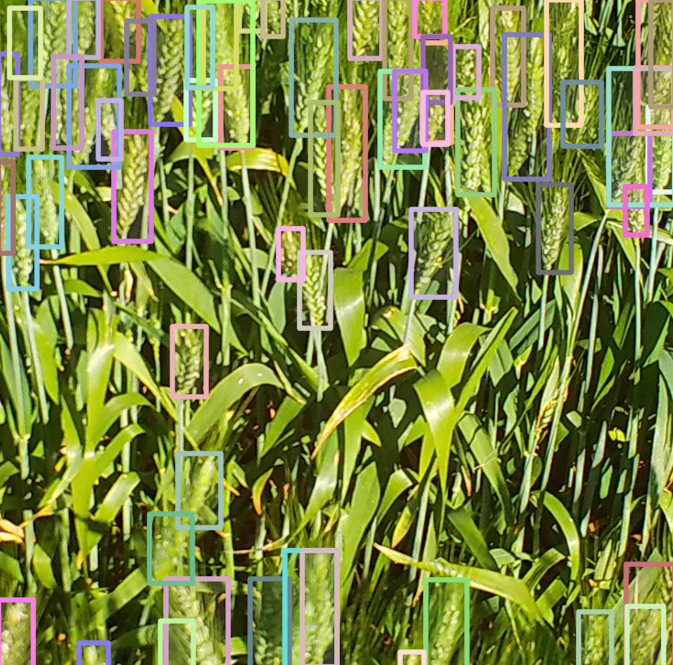Digital Phenotyping Use Cases
Unlocking Agricultural Insights: Advanced Trait Analysis at APPN-UQ Node
Our advanced tools and expertise allow us to develop deeply into the characteristics of your crops, offering precise measurements and actionable insights. Whether you're interested in understanding growth patterns or evaluating vegetation health, we provide a range of trait analysis services designed to enhance your agricultural research and decision-making. Discover how our technology can transform your data into powerful knowledge, driving your projects forward with confidence.

Wheat Head Detection
The wheat head detection model is used to automate the process of counting wheat heads across a field. It helps in providing precise,efficient, and reproducible data that can significantly impact farming decisions and agricultural research.

Normalized Difference Vegetation Index (NDVI)
NDVI quantifies vegetation grenness and is widely used to assess the density of plant growth across an area. It is calculated from visible and near-infrared light reflected by vegetation.

Visible Atmospherically Resistant Index (VARI)
VARI is designed to be less sensitive to atmospheric conditions and can estimate vegetation cover using only RGB wavelengths. It's used where multispectral data is not available, utilizing standard RGB images for assessing vegetation health.

Vegetation Health Index (VHI)
VHI combines various vegetation indices to assess the overall health and vitality of vegetation. It is used for monitoring vegetation health,detecting drought conditions, and assessing the impact of environmental stressors over large areas.

Optimized Soil Adjusted Vegetation Index (OSAVI)
OSAVI aims to enhance the robustness of vegetation monitoring in regions with low to moderate vegetation cover. By incorporating a soil adjustment factor, OSAVI reduces the soil background effect more effectively than other indices such as NDVI, making it better suited for regions where the soil surface can otherwise distort vegetation signals.

ChlorophyII Index (CI)
CI specifically measures the chlorophyII content, offering insights into the health and productivity of plants. It is critical in determining plant health, aiding in decisions about irrigation and fertilization in precision agriculture.

Normalized Difference Water Index (NDWI)
NDWI measures moisture content in vegetation, indicating plant water stress. It is useful for irrigation planning, drought assessment, and managing water resources in agriculture and forestry.

ChlorophyII Fluorescence Index (CFI)
CFI indirectly measures the chlorophyII fluorescence, which is linked to photosynthetic activity and plant stress. It is used in research for understanding plant health and stress responses, particularly in response to environmental changes.

Photochemical Reflectance Index (PRI)
PRI indicates the light-use efficiency of plants and can be used to assess photosynthetic activity. It is useful in determining plant stress before visible symptoms appear and for monitoring changes in photosynthetic efficiency over time.

Vegetation Condition Index (VCI)
VCI compares the current NDVI to the historical range (max and min) of NDVI values for the same period, giving a relatively indication of vegetation health. It is particularly valuable in monitoring changes in vegetation health over time, assessing drought impact, and supporting agricultural management practices.

Normalized Difference Red Edge Index (NDRE)
NDRE is a specialized vegetation index that focuses on the narrow 'red edge' spectral region of plant reflectance, located between the red and near-infrared (NIR) portions of the spectrum. NDRE is particularly sensitive to changes in chlorophyII content, making it valuable for assessing plant health and vitality.

Green Cover
Example Text for Green Cover
Not Sure Which Traits Can Help Your Phenotyping Needs?
Contact our team and we can provide guidance on the best phenotyping technology for your research
Contact us
